

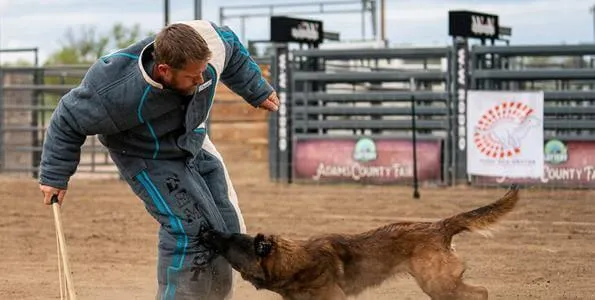
K9 Attack Dogs and K9 Dog Training Equipment
Have you ever wondered how attack dogs are trained? Or what equipment is used to protect the people training them?
I met with Sean Knudsen of Innovative K9 Academy. He breeds and trains Belgian Malinois, which make great K9 Attack dogs. If you’d like to watch the interview, you can do so here:
Why Wear Training Equipment?
Training these dogs requires caution. They have a strong bite force, so we must take care not to get bitten. That is why we use heavily reinforced jackets, bite sleeves and bite suits.
The issue is that the "bad guy" won't be wearing the suits we practice with. So, we have to find ways to make the situation more realistic and get the dogs off the suit. This way, we can be sure that the dogs will do what they are trained for when it is time. However, when training, protection is needed.
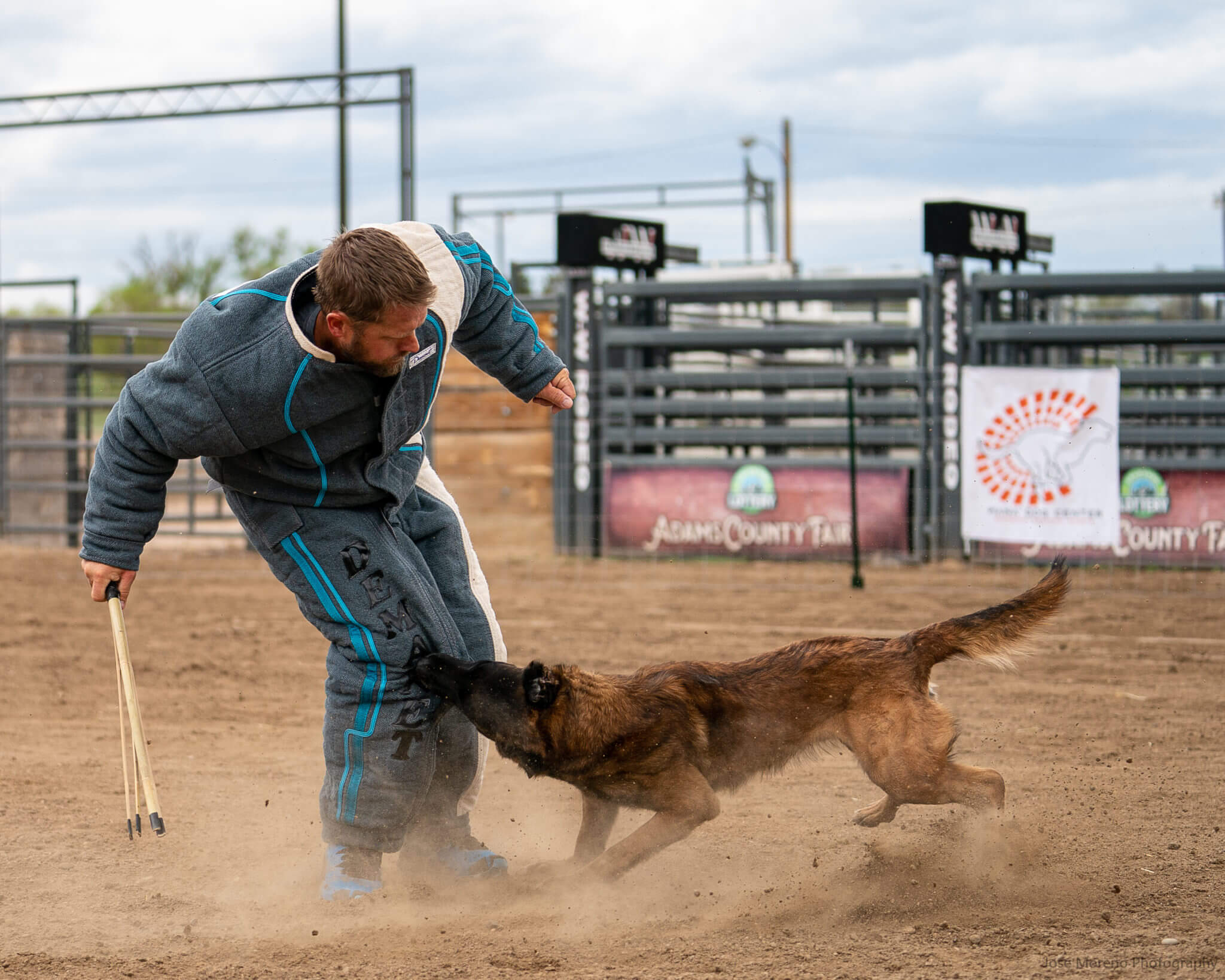
Watch a K9 Attack Dog bite a training pad. You can see they bite down hard. Then, they thrash their head around. This is a genetic, instinctive dog trait and how dogs have killed their prey for thousands of years.
So, when a dog bites either a training pad or a bad guy, they do the same thing. They bite down and then thrash their head around. Their teeth are sharp and can do a lot of damage this way. When we are training, we have to be sure that we are being very careful so as to not get hurt.
The training pads that we use are about 1-1 ½ in thick. The surface of the pad is very thick, so they cannot get their teeth through. In addition to this, the thick pad helps to protect you from the compression/bite force.
Sean trains some dogs with a powerful bite. Even when they bite through a protective bite pad, the compression can be intense enough to take your breath away. You recognize that you really don’t want to be on the receiving end of that bite without the proper protection.
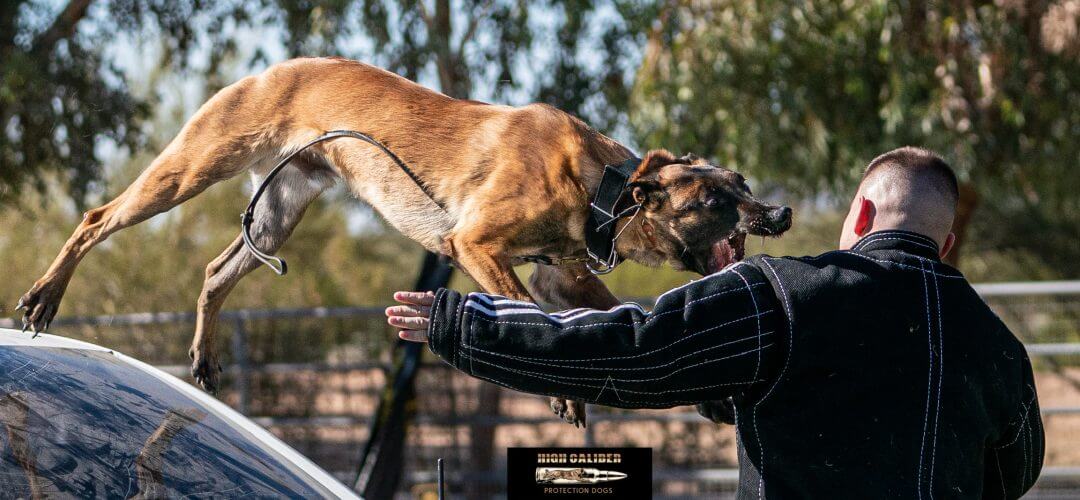
Ultimately, we want to keep everyone safe and have fun, so that is why we use protection.
Training Attack Dogs
Many of Sean's dogs go on to serve as protection animals. Others are used as sport or show dogs. The training process for each is unique.
Show/sport dogs are only taught with protective gear and never without it. With these dogs, if you tell them to attack, they will go for the equipment rather than a person.
One of the pieces of equipment that the dogs are trained on is a sleeve. Sean actually uses a thick leg sleeve interchangeably on his leg and arm. He also uses a jacket and pants padded suit which is custom ordered from Europe.
When The Dog Attacks
I got to wear the protective sleeve. The dog then attacked me. I could understand why the sleeve was important. While it was a bit intimidating for me, it was all fun for the dog.
There really was no aggression or anger in the dog, she just loves to bite and is trained to enjoy it. The dog basically just saw me as a big tug toy. When she was told to stop, she was perfectly friendly and willing to let me pet her. She would have preferred to continue to play and bite, but she was happy nonetheless.
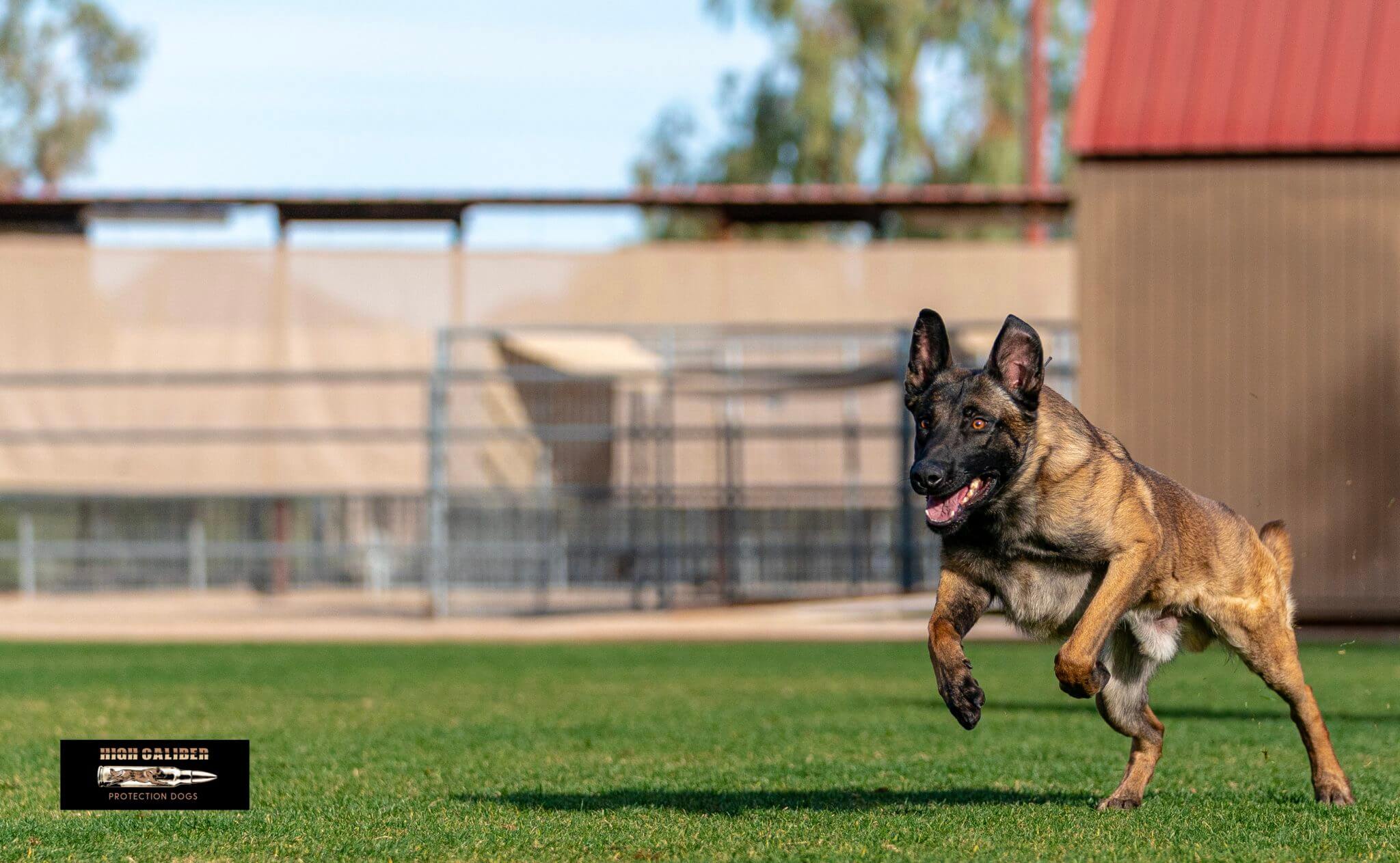
Puppy Training
This training begins at a very young age. Sean and his team have the puppies bite onto different toys. He teaches them how to grip, chase, bite, and hold the toy. Lastly, he teaches them to "out" or let go of the toy.
As early as 6 weeks old they are starting to chase toys (kind of like the leg sleeve). Sean will have the puppies in a harness and someone teasing the dogs with a toy. The dogs will be snapping at it, getting more excited and more frustrated and wanting to bite it. Then, they finally let them bite it.
Competition Dogs
For competition dogs, they will do 100 meter sprints to go get the “bad guy”. They are trained to go for the legs first. If they go for the upper body they will end up jumping from 10-15 feet away. This gives the decoy “bad guy” long enough to react and get out of the way of the dog.
Outside of that situation, the dogs are trained to attack whatever they can get to first. In these training situations the “bad guy” will wear a full body padded suit.
If someone is wearing equipment, the competition dogs are trained to bite the equipment. However, if someone is wearing full body equipment, they are trained to bite whatever they can get to first.
Once the dog bites, we want them to hold it and not let go. They may thrash and shake their heads. However, we want them to maintain the bite. They should not let go and bite again.
Professional Dogs
One problem that law enforcement dogs have is that they get one bite. The dog cannot just bite and then let go and bite a different place.
If they bite in different places, that is a lawsuit. So they are trained that they get one bite and that is it. They don’t let go and bite different places.
So these are all things that get worked on with the dogs starting at a very young age. They are trained to hold the one bite, to not let go, to have a nice, firm, full mouth grip. Those things are important in both competition dogs and personal protection dogs.
Sean trains his dogs for competitions as well as for personal protection. He sells dogs that go to protect people for anywhere from $60-100k, depending on the training.
They’ve sold a dog to a model, who wanted protection while walking around in NYC. They've sold dogs to businessmen who travel a lot and want protection for their kids and wife. They've sold dogs to lots of different people.
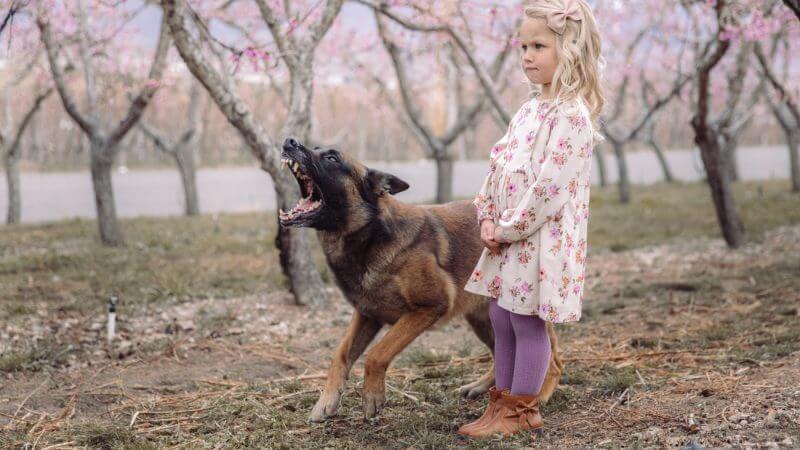
The dogs that Sean trains can do everything the police dogs do. The main difference is that they will also be friendly and sweet and gentle and safe with kids.
Letting the Dog Bite
Sean then showed me how his dogs are trained. He put on a padded jacket and greeted me. Then, he walked around me. Cami, his dog, followed him every step of the way. Then, he acted like he was going to attack (punch) me and she jumped up and bit his arm.
Next, he walked back a bit and I told her to attack. Cami ran up and bit his arm. She continued to bite down on his arm until I called her off. Then she even continued to track Sean until he took the padded jacket off.
Cami is 8 years old and has not been trained in about 3 years. However, she retains her knowledge from her previous years of training.
What is expected of Innovative K9 Academy dogs is that they will be very social, confident and friendly. We also expect them to be able to go do the protection work when the time comes.
Breeding Attack Dogs
Sean not only trains these dogs, he also breeds them. To anyone looking to get into dog breeding protection dogs, he recommends starting with health testing and temperament testing.
When he breeds dogs, he generally uses National and World Champion dogs. This ensures they go through a rigorous process to make sure that they will be suitable protection dogs. And even then, you really never know how the puppies will be.
Sean once bred two national champion dogs, they were both amazing dogs and on paper the puppies should have been amazing. However, the litter, although not terrible, just did not perform as they had hoped and expected from those two dogs.
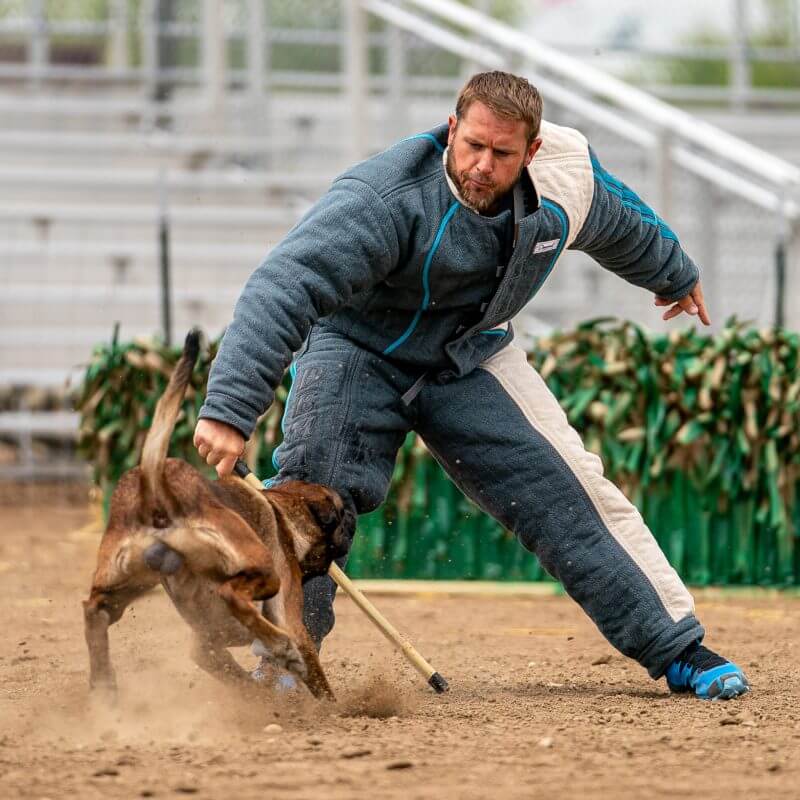
Sean’s team is always monitoring the dogs they are producing. He is always asking, “are they as good as we want or are expecting them to be?” He is prepared to adjust and make changes as needed.
He is always looking for the right combination of courage, craziness, and thoughtfulness in their dogs. They really want trainability, confidence, social ability, health and athleticism. All of these characteristics combine to create the perfect Belgian Malinois.
Sean can be found at innovativek9academy.com. If you are looking for a protection dog, his sister company is High Caliber Protection Dogs. They train and sell protection dogs.
If you’re interested in any other information about breeding please feel free to reach out using the form below.
Leave a comment

KEEP IN TOUCH
Subscribe for periodic updates
Copyright © 2024 Big Hearted Breeders

